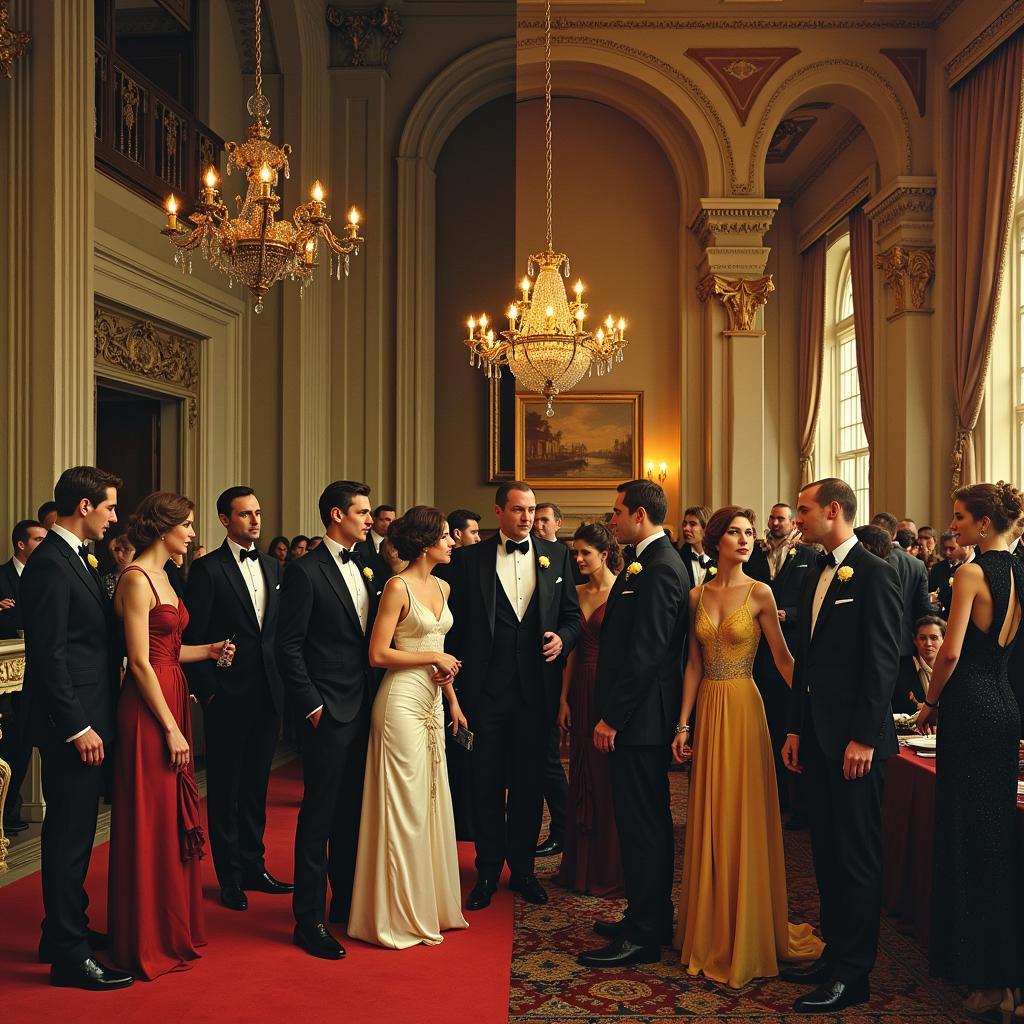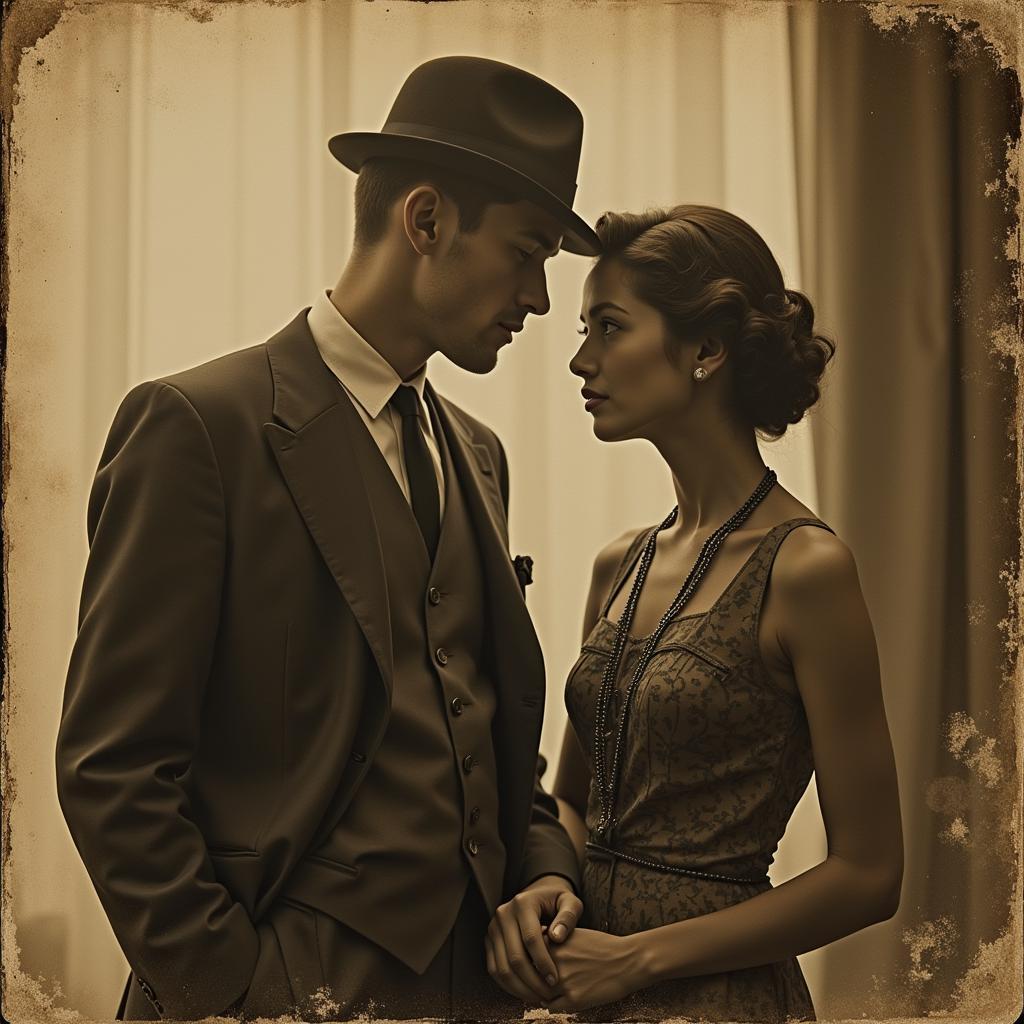The Roaring Twenties, a time of jazz, flapper dresses, and extravagant parties. F. Scott Fitzgerald’s The Great Gatsby offers a glimpse into this era, exploring themes of society and class in the context of the American Dream. This article delves into the complexities of wealth, social status, and the pursuit of happiness in Fitzgerald’s masterpiece.
The Illusion of the American Dream: Old Money vs. New Money
The Great Gatsby vividly portrays the stark contrast between “old money” and “new money” in 1920s America. The established elite, represented by characters like Tom and Daisy Buchanan, inherited their wealth and social standing, moving effortlessly through the upper echelons of society. They exude an air of careless indifference, often oblivious to the consequences of their actions. Conversely, Jay Gatsby, with his newly acquired fortune, represents the “new money” class. He throws lavish parties, hoping to attract Daisy’s attention, but he struggles to gain acceptance into the exclusive world of old money. Gatsby’s relentless pursuit of Daisy and his desire to recreate the past ultimately highlight the elusive nature of the American Dream.
how does the great gatsby relate to current society
This difference in social standing creates a palpable tension throughout the novel. The Buchanans, with their inherited wealth, possess a sense of entitlement and superiority. They view Gatsby, despite his riches, as an outsider, someone who doesn’t quite belong. This social hierarchy underscores the limitations of the American Dream, suggesting that mere wealth does not guarantee acceptance or happiness.
 Old Money vs. New Money in The Great Gatsby
Old Money vs. New Money in The Great Gatsby
What Does The Great Gatsby Say About Society? The Valley of Ashes: A Symbol of Social Inequality
Fitzgerald’s depiction of the Valley of Ashes, a desolate industrial wasteland, serves as a powerful symbol of the social and economic disparities of the time. This bleak landscape, situated between West Egg and New York City, represents the forgotten and marginalized members of society, those left behind by the roaring prosperity of the Jazz Age. The stark contrast between the opulence of Gatsby’s mansion and the poverty of the Valley of Ashes highlights the deep divide between the wealthy elite and the working class. It serves as a constant reminder of the social injustices and inequalities that underpin the glittering facade of the Roaring Twenties.
Dr. Amelia Hayes, a prominent literary scholar, notes, “The Valley of Ashes is a crucial element in understanding the social commentary within The Great Gatsby. It represents the moral decay and social inequalities that exist beneath the surface of the glamorous world inhabited by the wealthy.”
The Role of Gender in Gatsby’s Society
Women in The Great Gatsby are often portrayed as trapped within the confines of societal expectations. Daisy, for example, is confined by her marriage to Tom, a wealthy and powerful man who is openly unfaithful. She yearns for love and happiness but is ultimately unable to break free from the constraints of her social position. Jordan Baker, a professional golfer, embodies a new sense of independence, yet she remains tethered to the social circles of the wealthy elite. The novel explores the complexities of gender roles and the limited choices available to women during this era.
books about new york high society
Professor David Miller, a historian specializing in the Roaring Twenties, adds, “Fitzgerald’s portrayal of women in The Great Gatsby offers a valuable insight into the social dynamics and gender expectations of the era. While some women embraced newfound freedoms, many remained constrained by societal norms and expectations.”
The Tragedy of Gatsby: A Pursuit of an Impossible Dream
Gatsby’s tragic fate serves as a cautionary tale about the dangers of clinging to the past and the illusion of achieving happiness through material possessions. His obsession with Daisy and his unwavering belief that he can recreate their lost love ultimately lead to his downfall. The novel suggests that true happiness cannot be bought or manufactured, and that the relentless pursuit of an unattainable dream can have devastating consequences.
 The Tragedy of Gatsby's Impossible Dream
The Tragedy of Gatsby's Impossible Dream
Conclusion
The Great Gatsby remains a timeless classic because it explores universal themes of love, loss, and the complexities of human relationships within the context of society and class. Fitzgerald’s masterful prose and insightful social commentary continue to resonate with readers today, reminding us of the enduring power of literature to illuminate the human condition. The novel’s exploration of society and class provides a poignant reflection on the American Dream and its inherent contradictions.
FAQ
- What is the significance of the green light in The Great Gatsby?
- How does the novel critique the materialism of the Roaring Twenties?
- What is the relationship between Gatsby and the Buchanans?
- How does the setting of West Egg and East Egg contribute to the novel’s themes?
- What is the symbolic meaning of the Valley of Ashes?
- How does Gatsby’s past influence his present actions?
- What is the role of Nick Carraway, the narrator, in the story?
For further support, please contact us at Phone: 02043854663, Email: [email protected] or visit us at Zone 34, Bac Giang, 260000, Vietnam. Our customer service team is available 24/7.